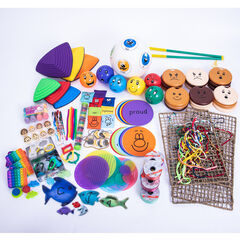Are you alright? We often ask this simple question as part our greeting. We ask it to show interest and be polite. To point out the obvious, for the question recipient to successfully answer if they are alright or not, we are relying on them being able to know how they are feeling and have the vocabulary to express themselves. We are also placing upon them the responsibility of knowing how to manage that feeling independently perhaps by deploying some sort of self-management strategy. This is self-monitoring and regulation.
What is self-monitoring and self-regulation?
Self-monitoring is checking in with yourself so that you can recognise how you are.
Self-regulation involves acting upon your findings from self-monitoring and then responding in order to control your own feelings, emotions and behaviour. They require the ability to pay attention to relevant stimuli and then respond accordingly.
What is self-monitoring and self regulation?
Children who have developed the ability to self-monitor and regulate are often able to:
- Remain calm in their response to stimuli,
- Remain more focussed,
- Manage their own behaviour,
- Demonstrate task organisation, maintenance and completion skills,
- Have sound self-knowledge,
- Have self-efficacy,
- Be more resilient,
- Delay gratification – show self-control,
- Be emotionally literate.
If we are unable to self-monitor and regulate effectively, we may perceive that something is threatening which can force us into survival mode.
Our children might then show us this by entering into a state of:
- Fight – an angry, aggressive response to stimuli,
- Flight – running away and withdrawing from a situation,
- Flock – seeking like-minded others to form a tribe. There is safety in numbers,
- Freeze – not being able to do anything and disassociating from the situation.
How does this relate to sensory needs?
When we put this into a sensory context, our children may find that they need to seek or avoid sensory experiences in order to feel ‘right’ or to filter their environment. This is about managing their arousal levels so that they can concentrate and focus. This can then impact upon behaviour. We use our senses to survive. If we feel that our senses are out of balance, we enter survival mode and our behaviours can alter accordingly.
So, to avoid this we need to think about how we can help our children to:
- Develop the ability to recognise where they are at in the moment.
- Recognise when their feelings, thoughts, behaviours and responses to stimuli are beginning to change by spotting early warning signs.
- Know their own triggers.
- Have a vocabulary to share how they are feeling.
- Have a range of well-rehearsed strategies that can be deployed independently.
How do we achieve this?
To achieve this, we need to remember that everything that we explore around self-monitoring and regulation must be taught and regularly rehearsed when children are having a good day -when they are calm, happy and ready. The analogy that it is too late to teach a drowning person to swim is helpful here!
This is where a very simple self-monitoring and regulation chart, developed together, can be really helpful. You may create it in a format that is unique and specific to your own child. Depending on the unique, personal sensory needs it might look something like this:

The most important part of this kind of reflection it to support our children to recognise that their response to a stimulus may be beginning to change: self-monitoring. This is so that they become proactive in independently deploying a strategy before the big responses kick in: self-regulating.
Finally, it is good to:
- Take time to share and talk together. Every child will have their own reflection and perception of their sensory response, how it makes them feel and strategies that work.
- Use vocabulary that is familiar and meaningful.
- Praise all attempts to try to spot when things are changing and to act accordingly.
- You may want to share this with all the people in your child’s life who support them so that they can understand too (with their permission).
- Be prepared to try a range of strategies to see what works best.
- Keep the chart as visual as possible with pictures and colour.
A huge thank you to Beccie Hawes for writing this blog for us.
About Beccie Hawes
Beccie has worked in all aspects of Special Educational Needs including mainstream, additionally resourced provision and specialist settings. She has extensive experience as a SENCo, Inclusion Manager, Lead Local Authority SEND Advisory Teacher and has set up and led an inclusion advisory service.
Beccie is currently proud to be the Head of Service with Cadmus Inclusive, part of Cadmus Services, which is based in Walsall. This service has a national reach and actively supports schools with all aspects of providing a high quality education for vulnerable learners. Beccie is the author of ‘The Complete Dyslexia Toolkit’ and co-author of ‘Getting it Right for SEND’ and ‘How to Create the Perfect Partnership with Parents’. Beccie also writes the national Ebriefing: SEND Bitesize. She has developed a number of educational resources to support learners which schools across the UK have purchased and use. Beccie remains very ‘hands on’ in the classroom and is passionate about being at the chalk face to support teachers and children to think differently for a brighter tomorrow. She is also the mum to four boys and a dog.








